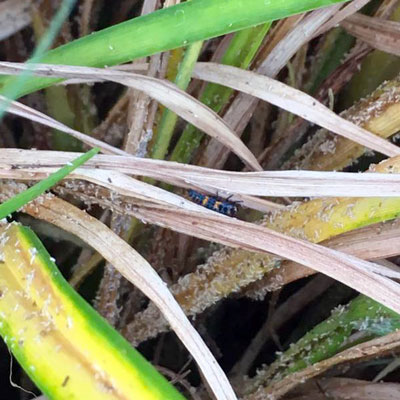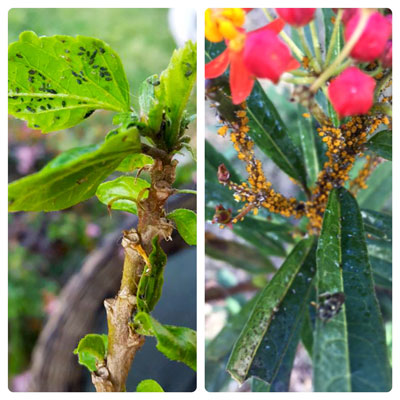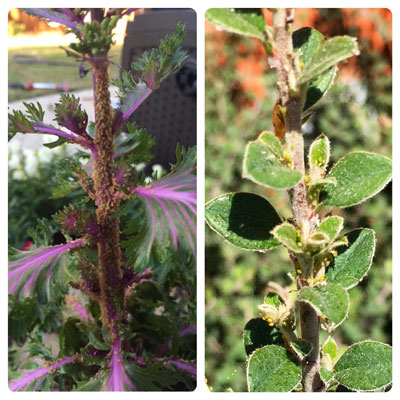Question of the Week Number 2: May 24, 2018
“What are these that are killing my daylilies?”

I’ve had many inquiries about aphids coating daylily plants this spring and the plants going downhill afterwards. These plants are certainly impacted. They also may have gotten too dry, and in some instances, the fungal disease leaf streak may have been involved. But in this photo from Facebook friend Amy Davis, aphids are definitely present. You can see the ladybug nymph at work on the plant if you look closely right in the center of the photograph.
These are aphids, also known as “plant lice.” They come in a wide variety of colors from creamy white and light green to bright gold (notably on milkweeds), red and black. They have pear-shaped bodies, and they have twin “exhaust pipes” sticking out from their rear ends.
I usually don’t worry too much about aphids, but this spring has been an unusually heavy one for them, probably due to cool temperatures late into the spring.

Hundreds of aphids congregate on the stems of tropical hibiscus on the left and tropical milkweed.
Aphids have the unusual ability of giving birth to living young without mating. When temperatures start to drop in late fall, they do mate, lay eggs for overwintering, and take a rest for the winter. We’re lucky more insects don’t operate on those terms!
Aphids have piercing-sucking mouthparts. As such they can cause distorted growth on the plants they attack. They’re also vectors of diseases, and they give rise to sticky honeydew residue that can coat plants’ leaves. Unsightly sooty mold (black) develops in the honeydew residue. That’s usually on plants other than daylilies, but it certainly does merit mentioning in any discussions about aphids.

Colonies of aphids are on the flowering stalk of kale on the left and gray cotoneaster. It’s time to replace the kale plants anyway, but the cotoneaster could use a little help stopping the epidemic spread of the pests.
As for control of aphids, almost any general-purpose inorganic or organic insecticide will list aphids on its label. Sevin is the one notable exception, as it is not especially effective. However, before you spray, take a closer look, and if you see a significant population of ladybugs on the same plants, they are predators of aphids and they’re probably at work feeding on the pests. In that case you may just want to hit the plants with a hard stream of water to knock the aphids off. The ladybugs will be able to fly away before the water blast hits.
